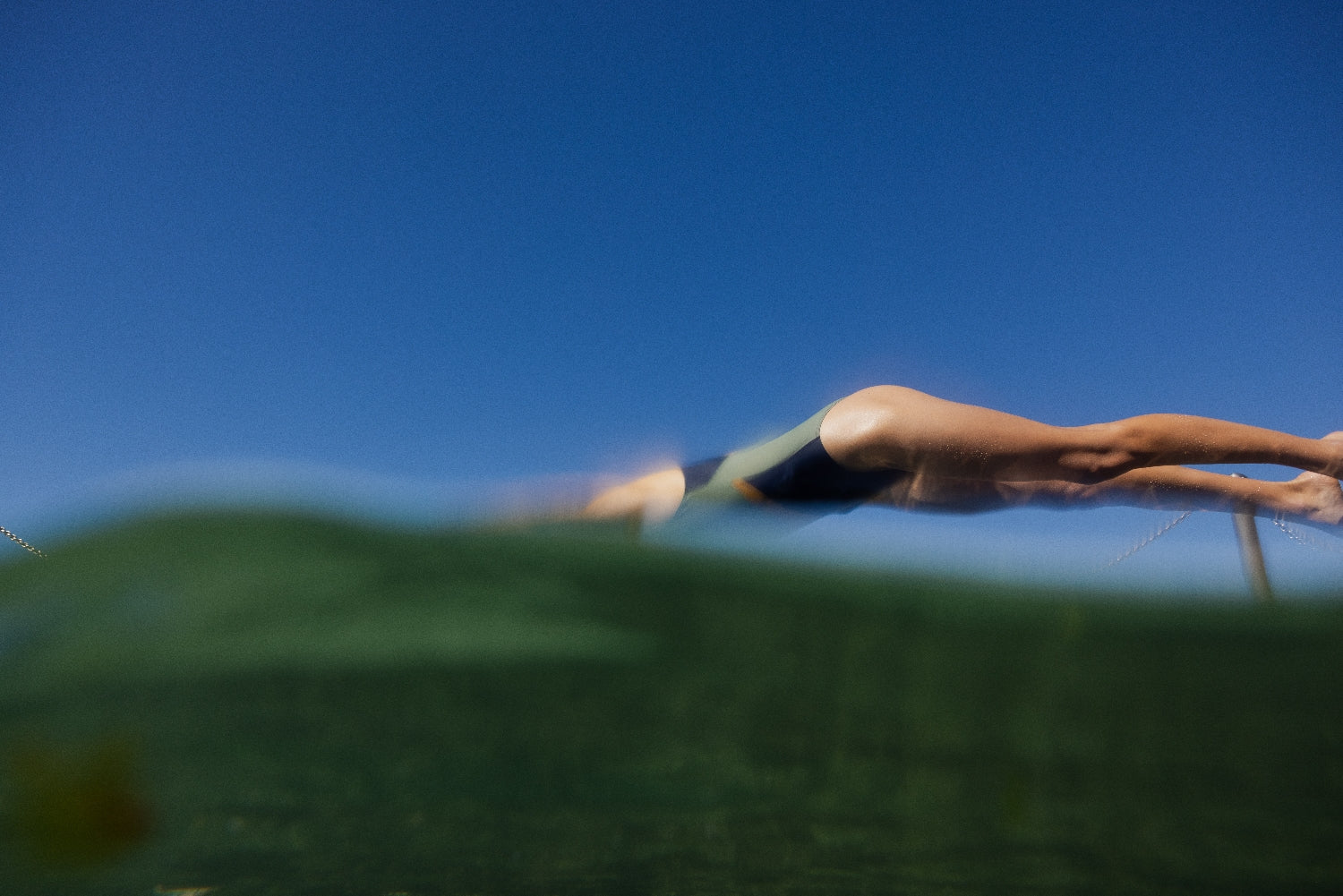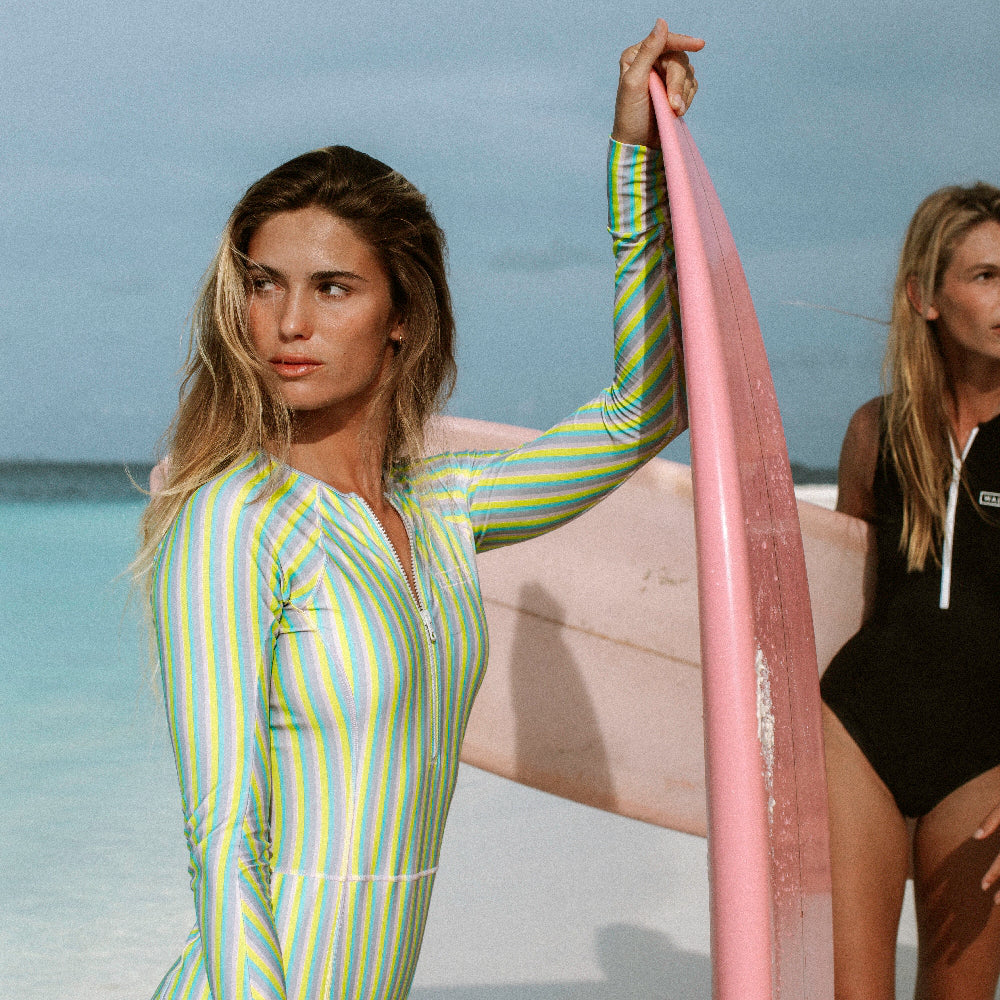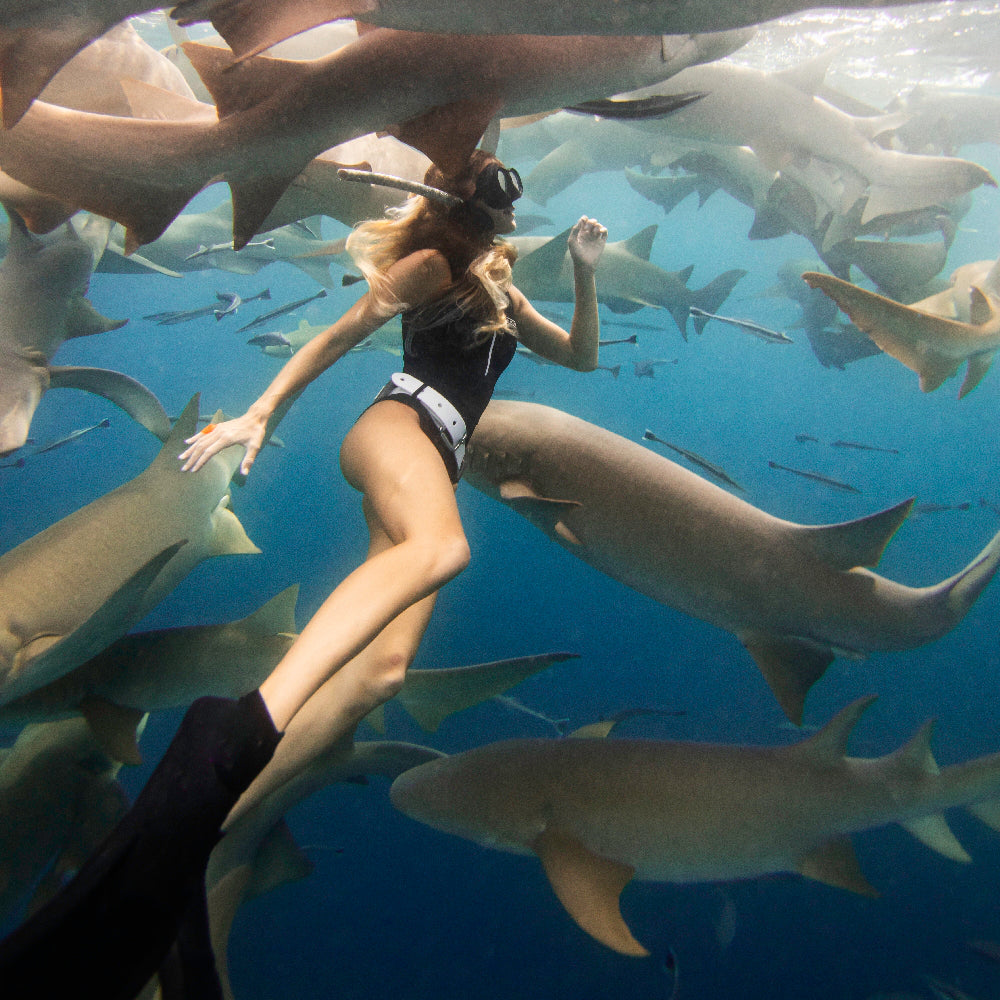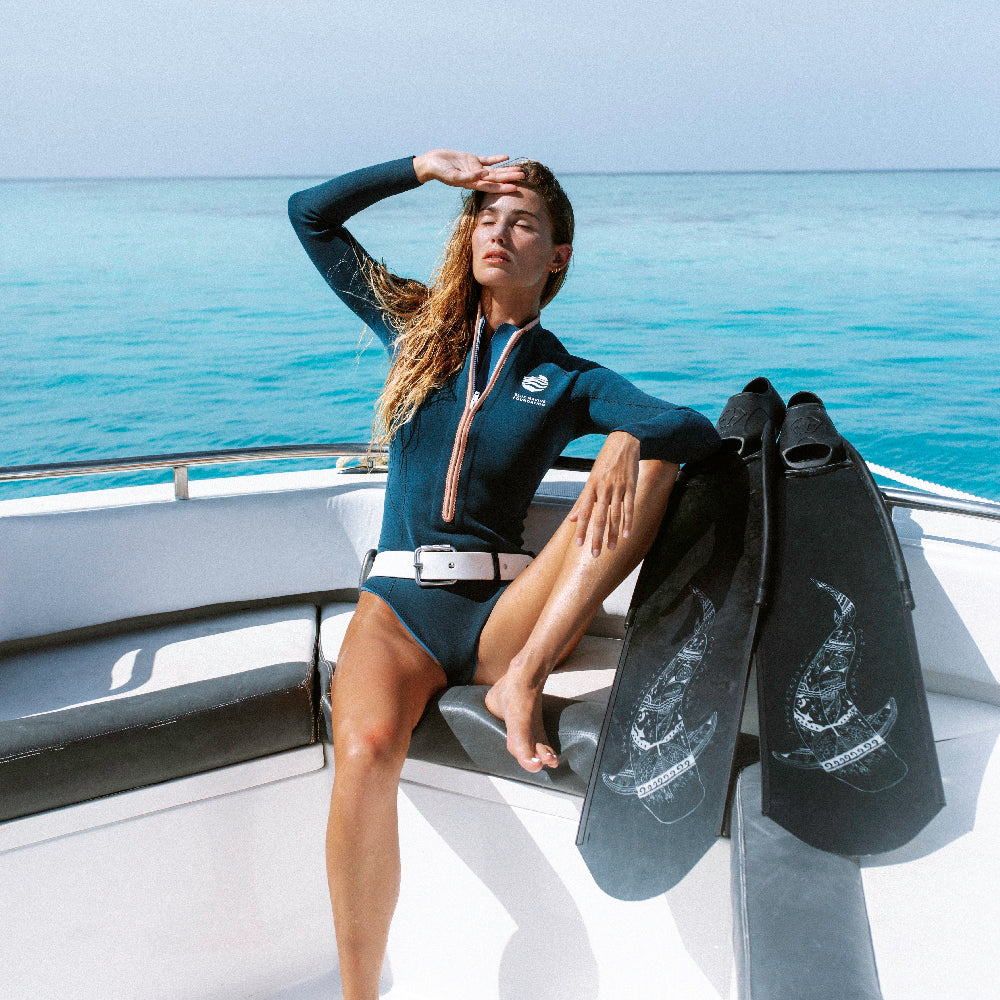Introduction
Embarking on a water-based adventure, whether it's surfing, diving, or swimming, requires the right gear to ensure both comfort and safety. At the heart of this gear is the wetsuit, a crucial piece of equipment that can make or break your experience in the water. However, choosing the perfect wetsuit is not as straightforward as it seems. With a myriad of options available in the market, it's essential to know what to look for to make an informed decision. This guide, "Wetsuit Wisdom: 5 Critical Checks Before Making Your Purchase," is designed to navigate you through the key considerations. From understanding the nuances of wetsuit materials to ensuring the perfect fit and assessing the necessary features, we'll delve into each aspect that demands your attention. Whether you're a seasoned water sports enthusiast or a beginner eager to take the plunge, this article will equip you with the knowledge to select a wetsuit that not only fits your needs but also enhances your aquatic adventures.

Material Matters: Understanding the Different Types of Wetsuit Materials
When it comes to selecting a wetsuit, the material is not just a matter of choice but a critical factor in performance and comfort. The most common material used in wetsuits is neoprene, a type of synthetic rubber known for its excellent insulation properties. Neoprene traps a thin layer of water between the suit and your skin, which your body warms up, thereby keeping you warm in the water. However, not all neoprene is created equal.
Types of Neoprene:
- Standard Neoprene: This type of Neoprene is most common. It is made from relatively flexible materials and can be found in all price classes. Unfortunately, this type of Neoprene is not very eco-friendly because it is made of petroleum (oil).
- Limestone Neoprene: This type of Neoprene is much more flexible than regular Neoprene and is also warmer because this material insulates better. It also lasts 2-3 times longer than Regular Neoprene. Furthermore, this material is an eco-friendlier choice. This material is commonly used in high-quality and high-performance wetsuits.
- Natural Rubber: With a growing focus on sustainability, some brands offer a foam made from natural rubber, that is harvested from rubber trees. However, the flexibility and insulation of this material are less than that of limestone neoprene. It's also the most costly material of all options.
Thickness Matters: The thickness of the neoprene plays a pivotal role in how warm the wetsuit keeps you. Thickness is usually measured in millimeters, and different parts of the wetsuit can have varying thicknesses. For instance, a "3/2" wetsuit means the neoprene is 3mm thick around the core and 2mm thick around the limbs, offering a balance between warmth and flexibility.
Sealed or Unsealed: The seams of a wetsuit can be sealed or unsealed. Sealed seams are glued and then stitched, making them more watertight and warmer. This technique is called Glued-and-Blindstitched seams or "GBS" seams. Unsealed seams, on the other hand, are just stitched, suitable for warmer waters where insulation isn’t as critical. The offes less flexibility and
Texture and Finish: The outer texture of a wetsuit also varies. Some have a smooth skin finish to reduce wind chill, while others have a textured surface for durability. Additionally, the inner lining can affect warmth and comfort, with some linings designed to retain more heat or dry quickly.
In conclusion, when selecting a wetsuit, understanding the nuances of the material is vital. It's not just about the look but the functionality, warmth, and comfort that the material offers. By choosing the right type of neoprene and paying attention to thickness and finishes, you can significantly enhance your water experience.
Fit and Comfort: Ensuring the Right Size and Cut
The right fit is crucial in a wetsuit. A well-fitted wetsuit should feel like a second skin, snug yet comfortable, without restricting movement. Here's how to ensure you get the right size and cut:
Measuring Yourself Correctly: Before you start looking for a wetsuit, measure yourself. Key measurements include your chest, waist, hips, and height. Different brands may have slightly varying size charts, so it's essential to check the specific sizing guide for the wetsuit you're interested in.
Understanding Wetsuit Cuts:
- Full Suit: Covers the entire body and is ideal for colder waters.
- Spring Suit: Short arms and legs, suitable for warmer temperatures.
- Shorty: Short sleeves and shorts, perfect for very warm conditions.
The Importance of a Snug Fit: A well-fitting wetsuit should be tight enough to maintain a thin layer of water between the suit and your body, which acts as insulation. However, it shouldn't be so tight that it restricts breathing or movement. Pay attention to areas like the armpits, groin, and shoulders, where poor fit can cause discomfort.
Flexibility is Key: For activities like surfing or diving, you need a wetsuit that allows freedom of movement. Check the flexibility around the shoulders and knees. High-end wetsuits often use more flexible materials in these areas to facilitate movement.
Trying On Different Styles: Don't hesitate to try on different styles and brands. Each brand might have a slightly different fit, and what works for one person may not be the best for another. Move around in the suit to ensure it doesn't restrict your movement.
Women's and Men's Specific Cuts: Wetsuits are designed differently for men and women, taking into account different body shapes. Women's wetsuits typically have more room in the chest and hips, while men's suits are broader at the shoulders.
Zipper Placement: The placement of the zipper can affect both the fit and the ease of getting in and out of the wetsuit. Back zippers are standard, but some suits have chest zippers, which can offer better flexibility and a tighter seal.
Custom Tailored Options: For those who struggle to find the perfect fit, custom-tailored wetsuits are an option. Though more expensive, they guarantee a suit that fits your exact measurements.
In conclusion, the right fit and comfort in a wetsuit can greatly enhance your water sports experience. Taking the time to find a wetsuit that fits well, offers the right amount of flexibility, and suits the conditions you'll be using it in, is well worth the effort.

Thickness and Warmth: Matching the Wetsuit to Water Conditions
Choosing the right wetsuit thickness is essential for comfort and safety in various water conditions. The thickness of a wetsuit determines its ability to retain heat and provide buoyancy. Here’s how to select the appropriate thickness for your needs:
Understanding Wetsuit Thickness:
- Wetsuit thickness is measured in millimeters (mm) and often listed as two or three numbers, such as 3/2 or 5/4/3. The first number(s) represent the thickness around the torso, which provides warmth, while the last number indicates the thickness in the arms and legs, allowing for mobility.
- Thicker wetsuits (e.g., 5/4/3) are designed for colder waters, providing more insulation. Thinner wetsuits (e.g., 2/1 or 3/2) are better suited for warmer waters, offering more flexibility.
Temperature Guide:
- Above 65°F (18°C): A 2/1 to 3/2 mm wetsuit is usually sufficient.
- 59°F to 64°F (15°C to 18°C): Opt for a 3/2 to 4/3 mm wetsuit.
- 52°F to 58°F (11°C to 14°C): A 4/3 to 5/4/3 mm wetsuit is recommended.
- Below 52°F (11°C): Consider a wetsuit thicker than 5/4/3 mm, possibly with a hood, gloves, and boots.
Factors Influencing Choice:
- Activity Type: High-movement activities like surfing may require a more flexible, thinner suit, while static activities like diving might benefit from thicker options.
- Personal Tolerance: Some individuals feel the cold more than others. If you tend to get cold easily, opting for a thicker wetsuit is advisable.
Buoyancy Considerations:
- Thicker wetsuits offer more buoyancy, which can be a benefit for beginners or certain water activities. However, divers might need to adjust their weight systems to compensate for the extra buoyancy.
Layering for Additional Warmth:
- In colder conditions, consider layering with a wetsuit vest or hood, which can add warmth without significantly restricting movement.
Wetsuit Technology:
- Advances in wetsuit technology have led to the development of materials that provide better insulation, even with thinner neoprene. Look for features like thermal linings or liquid-sealed seams for additional warmth.
In summary, matching the wetsuit thickness to your specific water conditions and personal needs is key to a comfortable and safe experience. By understanding the role of wetsuit thickness in warmth and buoyancy, you can make an informed choice that enhances your performance and enjoyment in the water.

Seams and Stitching: Quality and Durability Factors
When investing in a wetsuit, the seams and stitching are as important as the material itself. They are the backbone of a wetsuit’s structure, ensuring durability and affecting water tightness. Understanding the different types of seams and stitching can help you choose a wetsuit that will stand the test of time and elements.
Types of Wetsuit Seams:
- Flatlock Stitching: Identified by a flat seam that is comfortable against the skin, flatlock stitching is suitable for warm-water wetsuits. It is durable but not completely watertight.
- Glued and Blindstitched (GBS): This method involves gluing the seams together and then stitching without penetrating the entire neoprene, which makes the seam watertight. It’s ideal for colder waters.
- Sealed Seams: These are glued and then stitched, and often further sealed with a liquid rubber on the outside to prevent water from seeping in. This type is the warmest and most watertight.
Stitching Quality:
- The quality of stitching is paramount. High-density stitching that does not pierce the neoprene all the way through prevents water from entering and increases durability.
- Pay attention to areas under high stress, like the underarm and crotch areas. These should have reinforced stitching to prevent rips and tears.
Seam Placement:
- Seam placement is designed to maximize flexibility and comfort. A well-designed wetsuit will have seams that align with the body’s natural movement lines.
- Minimized seam design can also reduce the chance of chafing and increase the wetsuit’s integrity.
Durability Features:
- Look for additional durability features like seam taping or spot taping at high-stress points. Taping can add to the life expectancy of the wetsuit.
- Some wetsuits come with a warranty that covers seam and stitching repairs, which can be a testament to the manufacturer’s confidence in their product.
Testing and Maintenance:
- Before purchasing, inspect the seams and stitching thoroughly. Pull gently at the seams to test their strength.
- Proper maintenance, including rinsing with fresh water and drying away from direct sunlight, can significantly extend the life of the seams and stitching.
In conclusion, the seams and stitching of a wetsuit are critical factors that affect the suit’s performance and longevity. A well-constructed wetsuit with carefully designed seams and high-quality stitching will provide a better experience, keeping you warm and allowing you to enjoy your water activities for many seasons.

Additional Features and Accessories: What Else to Look For
When selecting a wetsuit, aside from material, fit, thickness, and seams, there are additional features and accessories that can enhance your experience. Here’s what else to consider:
Zipper Types and Placement:
- Back Zip: Traditional and easy to get into, but can be less comfortable and flexible.
- Chest Zip: Offers better flexibility and a tighter seal, which can be more challenging to get into.
- No Zip: Provides the best flexibility and eliminates the chance of zipper failure, but requires more effort to put on.
Knee Pads:
- Reinforced knee pads are a must for activities that put stress on the knees, such as surfing or diving.
Internal Thermal Lining:
- For colder waters, look for wetsuits with an internal thermal lining for extra warmth without adding bulk.
Key Pocket:
- Some wetsuits come with a small, often hidden, pocket for storing a key while you’re in the water.
UV Protection:
- Many wetsuits offer UPF protection, which can be a valuable feature for those spending extended periods in the sun.
Color and Visibility:
- Brightly colored wetsuits increase visibility in the water, which can be a safety feature for open water swimmers or in areas with boat traffic.
Eco-Friendly Materials:
- With sustainability becoming increasingly important, some brands offer wetsuits made from eco-friendly materials, such as natural rubbers or recycled plastics.
Ankle and Wrist Seals:
- Good seals at the ankles and wrists can help prevent water from flushing into the suit, keeping you warmer.
Corrosion-Resistant Hardware:
- Look for zippers and other hardware that are corrosion-resistant, especially if you'll be in saltwater environments.
Warranty and Brand Reputation:
- A wetsuit is an investment. Check the warranty and brand reputation for quality assurance and service.
Considering these additional features can significantly improve your comfort, performance, and safety in the water. Remember, the best wetsuit for you is one that fits your specific activity, water conditions, and personal preferences.

Conclusion
Investing in the right wetsuit is about more than just a price tag; it's about enhancing your comfort, performance, and safety in the water. From the intricacies of material selection and the precision of a perfect fit to the technicalities of thickness for thermal protection, and the robustness of seams and stitching — every detail matters. Moreover, additional features like zippers, knee pads, and eco-friendly materials can significantly enhance your aquatic experience. As we've explored in "Wetsuit Wisdom: 5 Critical Checks Before Making Your Purchase," understanding these critical factors will lead you to a wetsuit that not only suits your needs but also stands as a reliable companion on your water adventures. So, before you dive into your next underwater exploration or surf session, ensure that your wetsuit checks all the boxes for an unforgettable and comfortable experience.
Remember, the ocean awaits, and with the right wetsuit, you're well-equipped to meet it head-on. Stay warm, stay safe, and most importantly, have fun out there!




